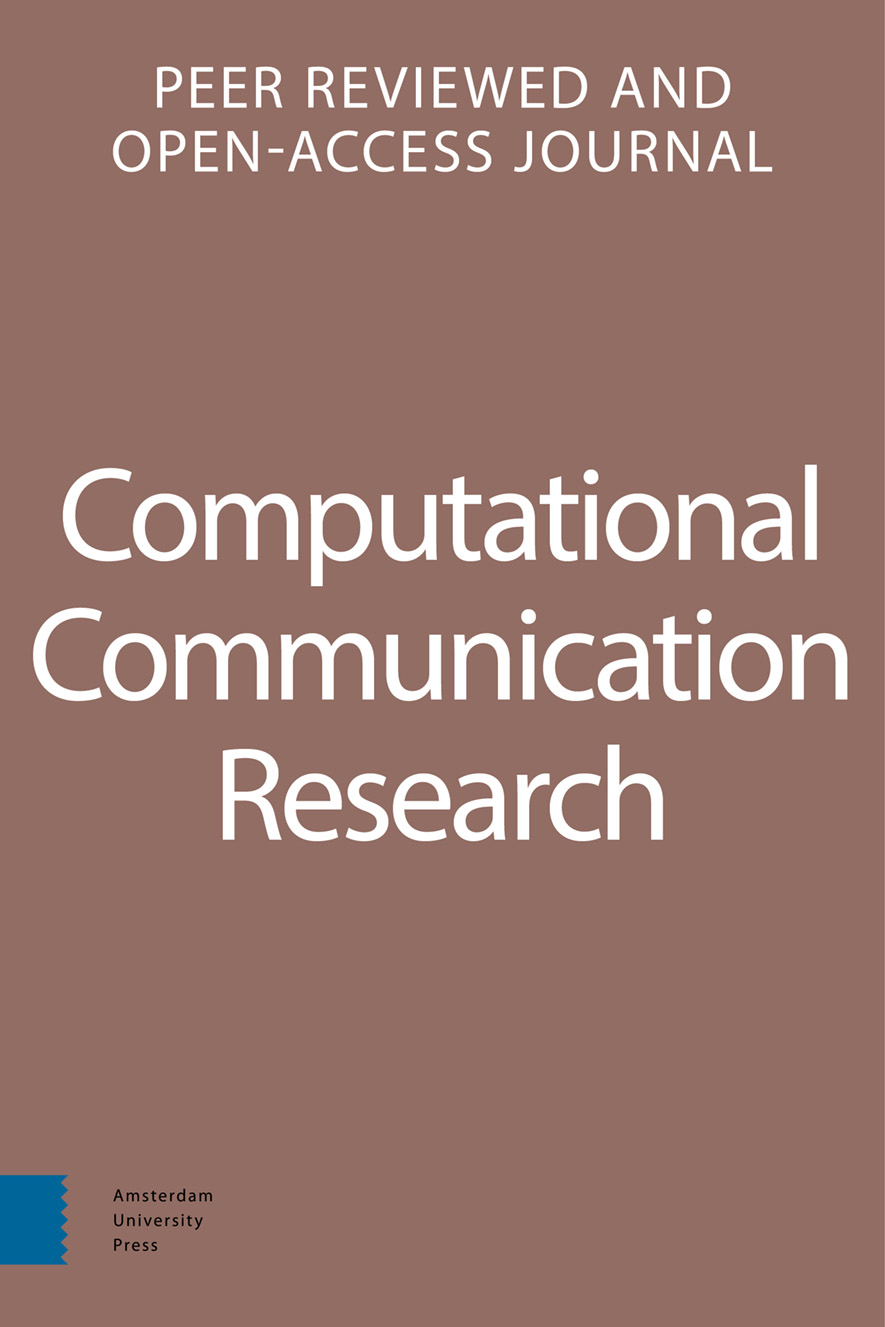- Home
- A-Z Publicaties
- Computational Communication Research
- Previous Issues
- Volume 1, Issue 1, 2019
Computational Communication Research - Volume 1, Issue 1, 2019
Volume 1, Issue 1, 2019
Taal:
Engels
-
-
oa A Roadmap for Computational Communication Research
Meer MinderAuteurs: Wouter van Atteveldt, Drew Margolin, Cuihua Shen, Damian Trilling & René WeberAbstract Computational Communication Research (CCR) is a new open access journal dedicated to publishing high quality computational research in communication science. This editorial introduction describes the role that we envision for the journal. First, we explain what computational communication science is and why a new journal is needed for this subfield. Then, we elaborate on the type of research this journal see Read More
-
-
-
oa iCoRe: The GDELT Interface for the Advancement of Communication Research
Meer MinderAuteurs: Frederic R. Hopp, James Schaffer, Jacob T. Fisher & René WeberAbstract This article introduces the interface for communication research (iCoRe) to access, explore, and analyze the Global Database of Events, Language, and Tone (GDELT; Leetaru & Schrodt, 2013). GDELT provides a vast, open source, and continuously updated repository of online news and event metadata collected from tens of thousands of news outlets around the world. Despite GDELT’s promise for advancing commu Read More
-
-
-
oa News Organizations’ Selective Link Sharing as Gatekeeping
Meer MinderDoor Chankyung PakAbstract To disseminate their stories efficiently via social media, news organizations make decisions that resemble traditional editorial decisions. However, the decisions for social media may deviate from traditional ones because they are often made outside the newsroom and guided by audience metrics. This study focuses on selective link sharing as quasi-gatekeeping on Twitter – conditioning a link sharing decision abou Read More
-
-
-
oa Computational observation
Meer MinderAuteurs: Mario Haim & Angela NienierzaAbstract A lot of modern media use is guided by algorithmic curation, a phenomenon that is in desperate need of empirical observation, but for which adequate methodological tools are largely missing. To fill this gap, computational observation offers a novel approach—the unobtrusive and automated collection of information encountered within algorithmically curated media environments by means of a browser plug-in. In c Read More
-
-
-
oa An Experimental Study of Recommendation Algorithms for Tailored Health Communication
Meer MinderAuteurs: Hyun Suk Kim, Sijia Yang, Minji Kim, Brett Hemenway, Lyle Ungar & Joseph N. CappellaAbstract Recommendation algorithms are widely used in online cultural markets to provide personalized suggestions for products like books and movies. At the heart of the commercial success of recommendation algorithms is their ability to make an accurate prediction of a target person’s preferences for previously unseen items. Can these algorithms also be used to predict which health messages an individual will evaluate Read More
-
Most Read This Month
Article
content/journals/26659085
Journal
10
5
false
nl

Most Cited Most Cited RSS feed
-
-
oa Computational observation
Auteurs: Mario Haim & Angela Nienierza
-
- More Less

